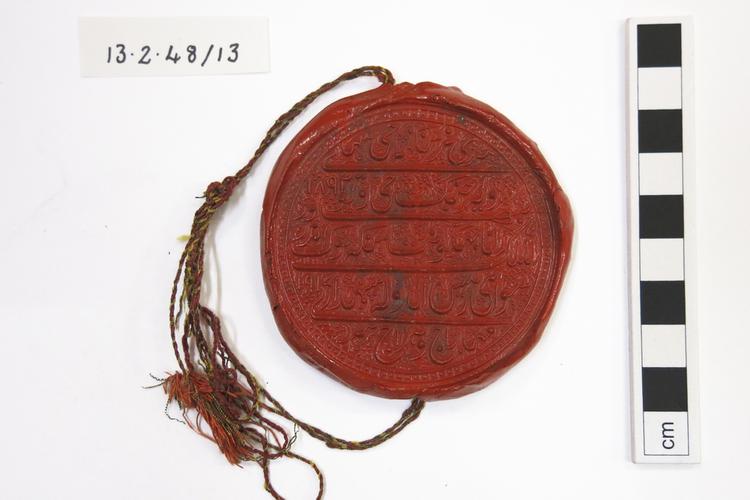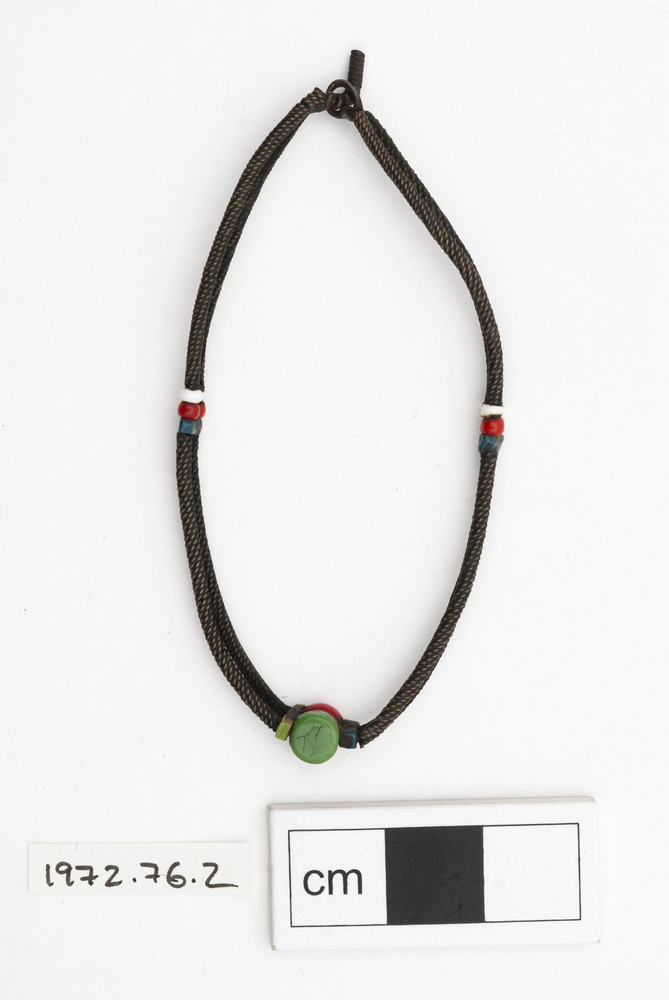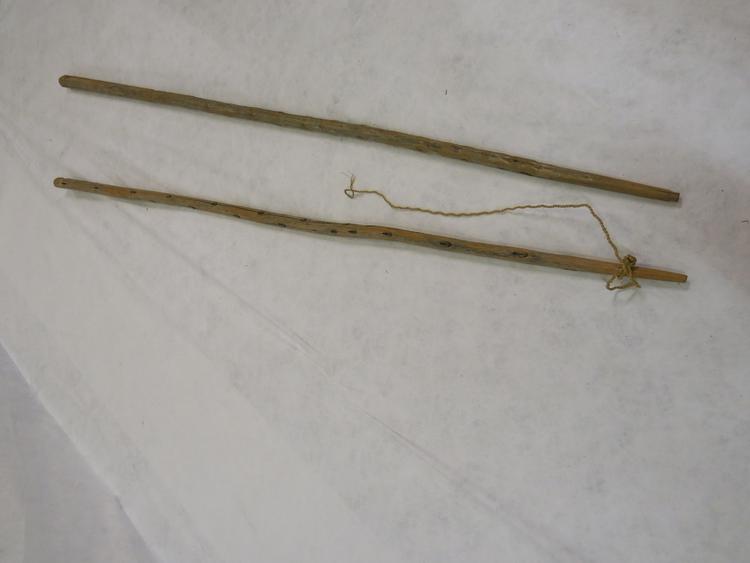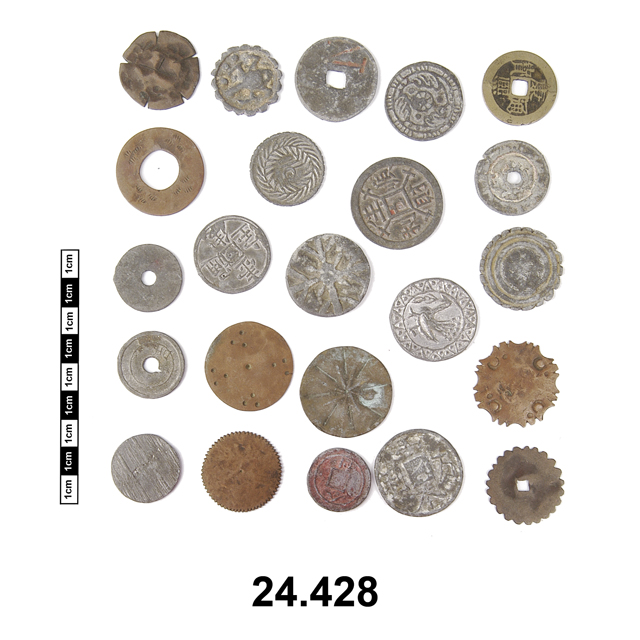
Circular wax seal impression, with red and gold tasseled cords attached. The seal is inscribed in Indo-Persian, following an honorific formula. The inscription gives the name Narsinghadev, an official of an 'emperor' Bhagvant Singha, and dates that are clearly equivalent to AD 1838-39 and 1859-60. The first probably refers to the king's accession, and the latter the current date. They must refer to Rana Bhagwant Singh, GCSI (1823 – 7 February 1873) the Jat ruler of Dholpur state (1836 - 1873) in Rajasthan, India. GCSI = Knight Grand Commander of the Order of the Star of India. The seal would be affixed to any official document: but we are not told Narsinghadev's specific function. The impression is of exactly the same seal as 13.2.48/12 and 13.2.48/15.
Wax seal from India. The Horniman wax seals 13.2.48/12, 13.2.48/13 and 13.2.48/15 all communicate the same information. They follow an honorific formula and mention a ruler called Bhagvant Singh, but who exactly this ruler could be is hard to ascertain . The seals are written in Indo Persian (a form of Persian influenced by Hindi) in the Nasta’liq script. The language used on the seals harks back to the rule of the Mughals in India when Persian and Indian cultures and languages intermixed. The influence of the Mughals can be seen today in Urdu, the official language of Pakistan which is very similar to Hindi, but written in a Persianized script . The inscriptions are difficult to date but they are probably from the mid nineteenth century. Wax seals like the Horniman examples are still commonly used to secure the padlocked doors and gates of important cabinets, offices and buildings in India and Pakistan. The seals were donated to the Horniman by Dr G Batten in 1948. This commentary by Saqib Baburi and Clifford Wright







